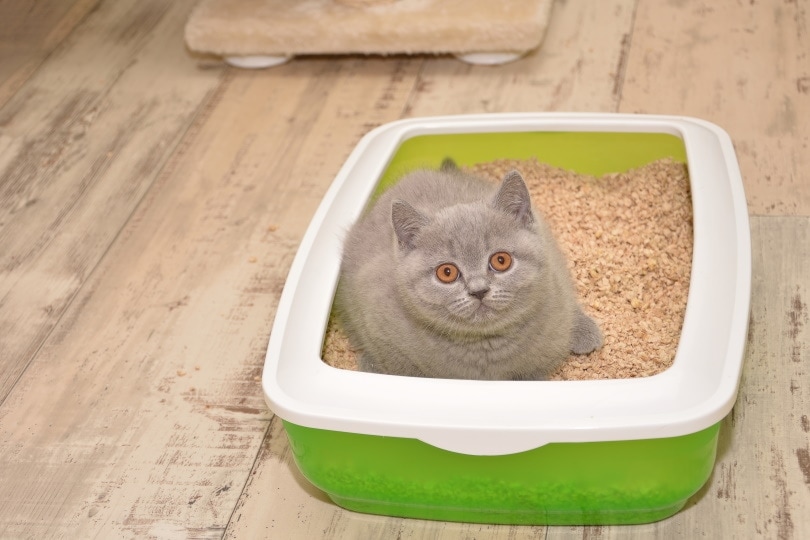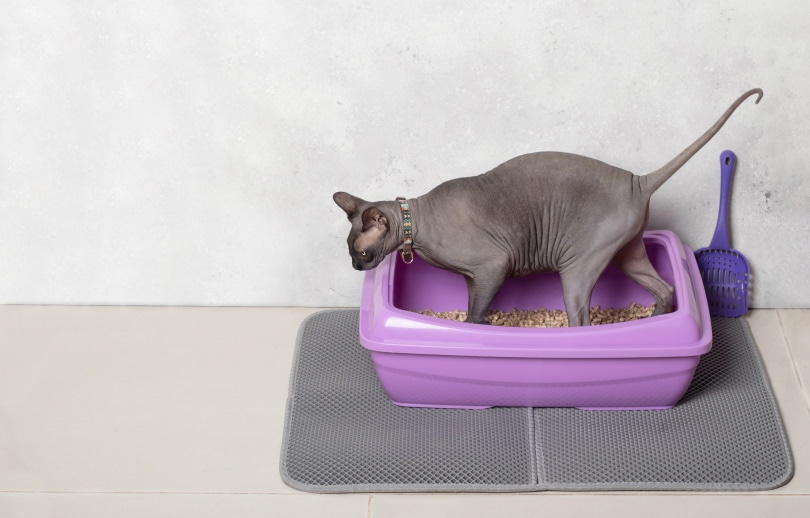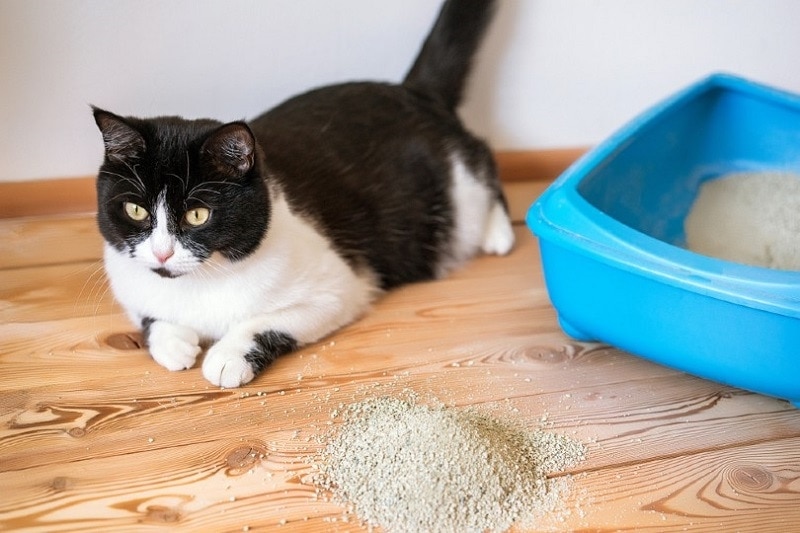If you’ve adopted a stray cat, congratulations! Giving a loving forever home to a cat that’s had a challenging start to life is one of the most wonderful things that you can do. It’s important to give your furry new friend time to adjust and adapt to their new circumstances. They may be used to fending for themselves, surviving on what food they can find, and doing their business wherever they like!
The good news is that it’s perfectly possible to train a stray cat to use a litter box.
How do you get a feral cat or a stray cat to use a litter box?
1. Choose the right cat litter

Stray cats will be sensitive to new, artificial smells. For that reason, it’s best to choose a natural, unscented cat litter that won’t offend their nose. If they’re put off by the smell of a highly fragranced cat litter, it’s likely that they may just decide to do their business somewhere else. Scented cat litters are a definite no-no, but even some unscented and natural cat litters, like pine pellets, can smell strong and may put your cat off.
We recommend using something like the World’s Best Unscented Clumping Cat Litter. You could also try a natural cat litter attractant – they tend to use a natural herb to attract cats and persuade them to use their litter box.
You may want to mix your chosen litter with soil for the first few weeks. If you’ve seen your stray cat doing their business in the garden, then select soil near to this spot — removing and disposing of any solid waste first, of course. This soil will already smell familiar to your new cat and help them make the transition to using a litter box.
Over time, you can reduce the amount of soil that you’re placing in the box until you’re just using cat litter.
2. Choose the right cat litter box

Stray cats will be used to doing their business out in the open, where they can quickly run away from predators or other aggressive cats if need be. For that reason, make sure to choose an open litter box, rather than a covered one. A larger sized litter box with high sides is also a good idea, as it may take your new cat a while to get used to the idea of using a confined area.
3. Choose the right litter box placement

If you’re working at persuading a stray cat to use a litter box, you may have adopted them for a shelter or are trying to encourage a stray that’s been hanging out in your garden to come inside and live a life of comfort. Each scenario will need a slightly different approach.
A stray cat adopted from a shelter and living inside will need a litter box somewhere in your house where they can easily gain access to and don’t feel trapped. Placing the litter tray down the end of a hallway or in the corner of the room may be your preference, but your new cat may feel trapped in those areas and choose not to use a litter box there. Placing the litter box in a relatively open area will help your cat feel more confident. This doesn’t need to be a permanent position, though! As your cat gains confidence, you can slowly move the litter box somewhere that you’d prefer to keep it long term.
For a stray cat that’s been living in your garden and that you’re gradually trying to convert into an inside cat, see if you can work out where they usually do their business in your garden. If they tend to pee and poop in one specific spot, then that’s a good place to leave a litter box in the hope that they may start using that instead. As they start to use the litter box, you can gradually move it closer to your house, in the hope that they’ll continue to use it.
When moving the litter box, only move it a few inches at a time. Your new cat will have spent a great deal of energy working up the courage to use it, and that can all be undone if you move it too far away from the initial spot in one go.
4. Encourage your cat with pheromones
Artificial feline pheromones can help your cat feel confident and comfortable in their surroundings. If your cat smells feline pheromones around their new litter box, they’re far more likely to feel like the litter box is something familiar that they can feel happy using.
Inside, you can use a calming diffuser, which needs to be plugged in, but you can also regularly spray the litter box itself with a pheromone spray.
5. Offer plenty of treats and verbal praise

As you see your stray cat using their new litter box, praise them as they’re getting out of the box and give them treats if they’ll accept them. You can always place the treats on the floor if the cat isn’t confident enough to take them out of your hand just yet.
If you’re interested in using positive reinforcement with your new cat, it’s a great idea to invest in a clicker. You can use this to let your cat know that they’ve done something right (like using their litter box) before they get a treat or praise. Make sure to start using the clicker away from the litter box, to get your cat used to the noise and general process. You can click and treat if your stray cat looks at you or comes when you call them. Once they’re confident with that, you can move on to rewarding them when they use the litter box too.
You can gradually phase out giving them a reward every single time that they use the litter box, but it’s worthwhile to spend the time enthusiastically rewarding them as they’re starting out!
6. Keep the litter box clean

Cats have a sensitive sense of smell, and if their little box smells dirty, they simply won’t use it. Make sure to clean out the box at least once a day, although multiple cleanings every day are preferable if you can. You’ll also need to regularly empty all the litter from the box and clean the box before filling it with completely fresh litter. The frequency that you need to do this will depend on the type of litter you use, how many cats you have, and how often they use the box. Check the guidelines for your chosen brand, and use that as a starting point.
7. Make adjustments gradually
Once your stray cat is happily using their new litter box, you can start gradually making changes if you want to. You may want to move the litter box, switch to a different litter, or switch to a covered or automatic litter box. Just make sure to make any changes slowly. You may want to keep at least one litter box that’s set up with the same litter as the box that your cat has already gotten used to. That way, your cat has the choice of using this or the new setup.
With a little patience, it’s possible to persuade a stray cat to start using a litter box like a total pro.
Featured image credit: dimitrisvetsikas1969, Pixabay







